
How to Use LoRa SX1278: Examples, Pinouts, and Specs
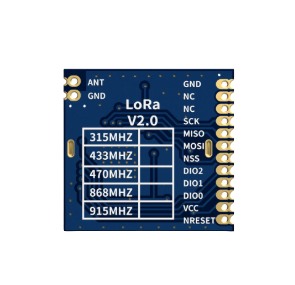
 Design with LoRa SX1278 in Cirkit Designer
Design with LoRa SX1278 in Cirkit DesignerIntroduction
The LoRa SX1278 is a low-power, long-range transceiver module designed for wireless communication in Internet of Things (IoT) applications. It operates in the sub-GHz frequency range (typically 433 MHz or 868 MHz, depending on regional regulations) and utilizes LoRa (Long Range) modulation technology. This enables the SX1278 to achieve extended communication range, high interference immunity, and low power consumption, making it ideal for applications requiring reliable data transmission over long distances.
Explore Projects Built with LoRa SX1278
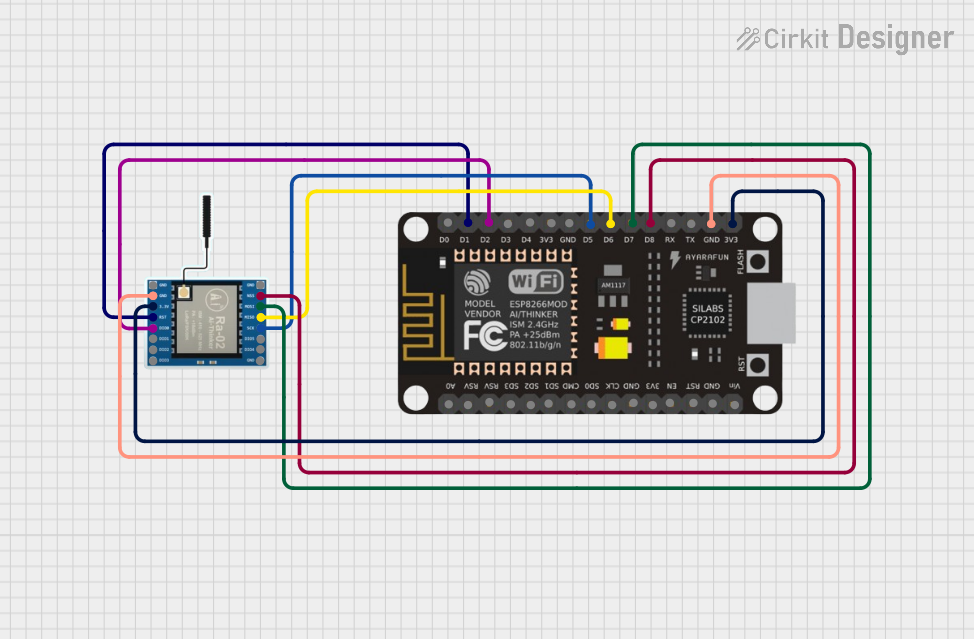
 Open Project in Cirkit Designer
Open Project in Cirkit Designer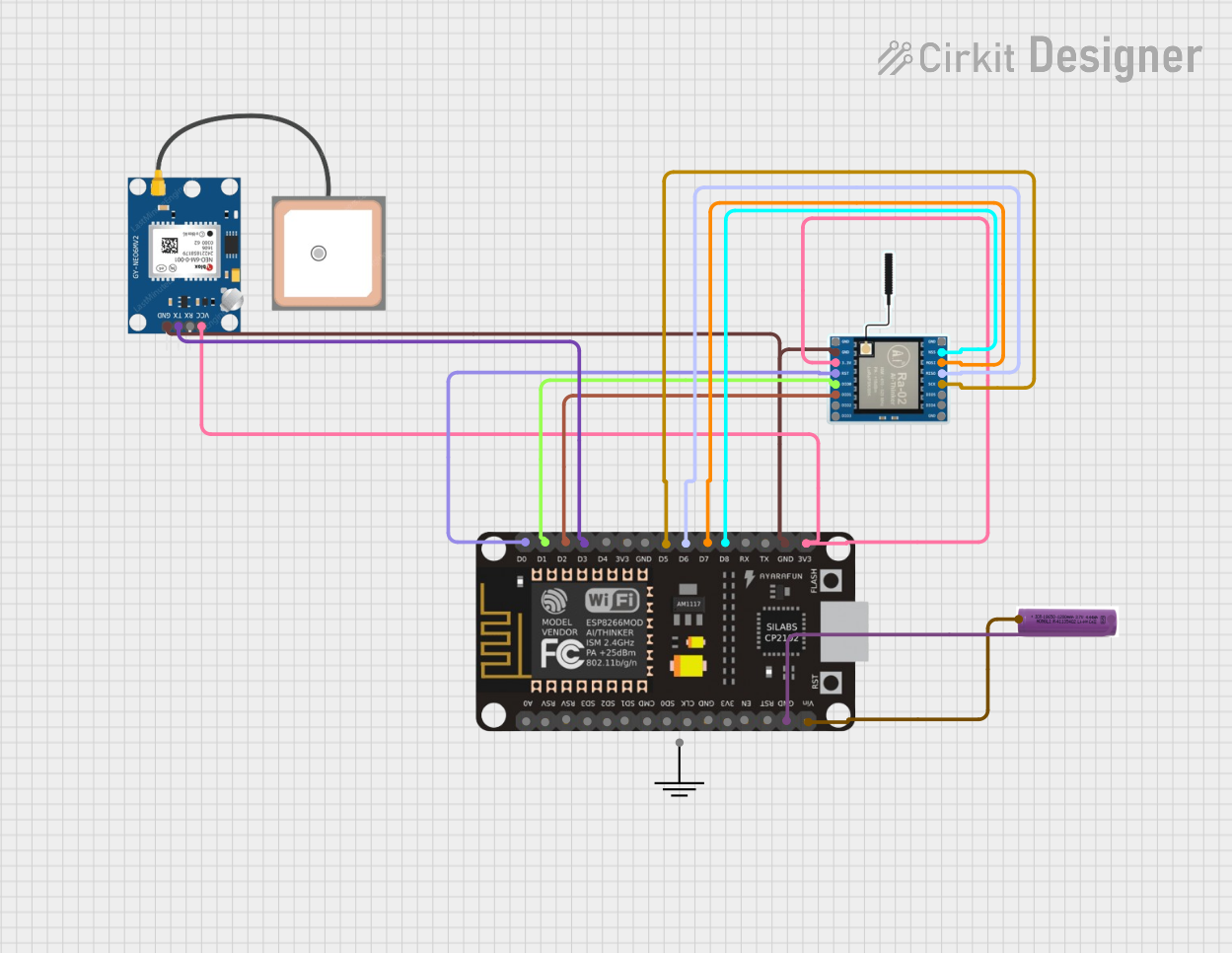
 Open Project in Cirkit Designer
Open Project in Cirkit Designer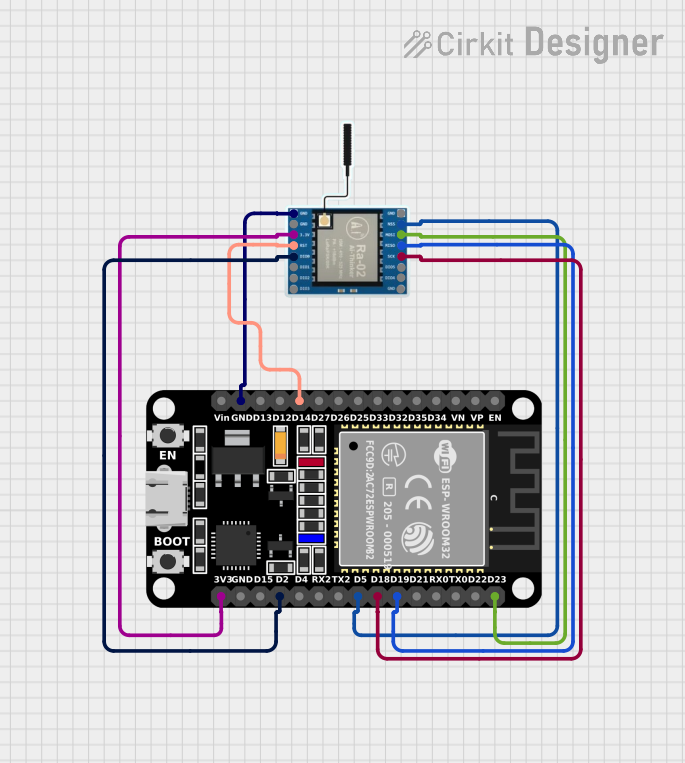
 Open Project in Cirkit Designer
Open Project in Cirkit Designer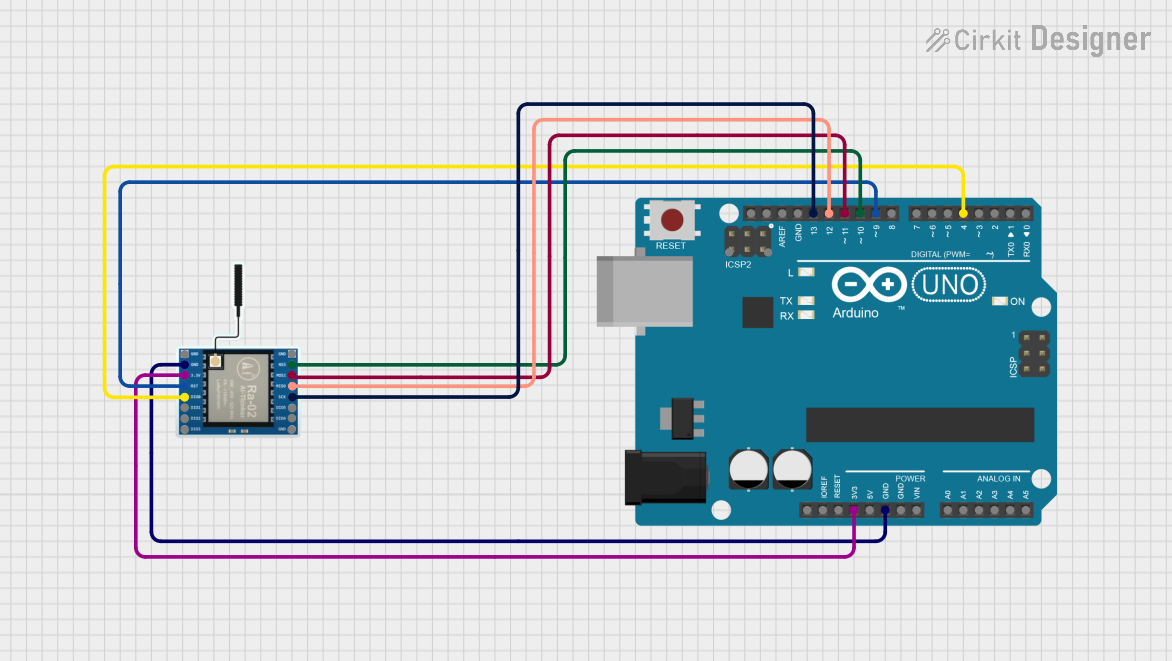
 Open Project in Cirkit Designer
Open Project in Cirkit DesignerExplore Projects Built with LoRa SX1278

 Open Project in Cirkit Designer
Open Project in Cirkit Designer
 Open Project in Cirkit Designer
Open Project in Cirkit Designer
 Open Project in Cirkit Designer
Open Project in Cirkit Designer
 Open Project in Cirkit Designer
Open Project in Cirkit DesignerCommon Applications and Use Cases
- Smart agriculture (e.g., soil moisture sensors, weather stations)
- Industrial automation and monitoring
- Smart cities (e.g., parking sensors, street lighting control)
- Home automation and security systems
- Remote environmental monitoring
- Asset tracking and fleet management
Technical Specifications
The following table outlines the key technical details of the LoRa SX1278 module:
| Parameter | Value |
|---|---|
| Frequency Range | 137 MHz to 525 MHz |
| Modulation Technique | LoRa, FSK, GFSK, OOK |
| Output Power | Up to +20 dBm |
| Sensitivity | Down to -137 dBm |
| Data Rate | 0.018 kbps to 37.5 kbps |
| Supply Voltage | 1.8 V to 3.7 V |
| Current Consumption | 9.9 mA (Rx), 120 mA (Tx at +20 dBm) |
| Communication Interface | SPI |
| Operating Temperature | -40°C to +85°C |
Pin Configuration and Descriptions
The SX1278 module typically comes with the following pinout:
| Pin Number | Pin Name | Description |
|---|---|---|
| 1 | GND | Ground |
| 2 | DIO0 | Digital I/O Pin 0 (Interrupt/Status Output) |
| 3 | DIO1 | Digital I/O Pin 1 (Interrupt/Status Output) |
| 4 | DIO2 | Digital I/O Pin 2 (Interrupt/Status Output) |
| 5 | DIO3 | Digital I/O Pin 3 (Interrupt/Status Output) |
| 6 | DIO4 | Digital I/O Pin 4 (Interrupt/Status Output) |
| 7 | DIO5 | Digital I/O Pin 5 (Interrupt/Status Output) |
| 8 | NSS | SPI Chip Select (Active Low) |
| 9 | SCK | SPI Clock Input |
| 10 | MOSI | SPI Master Out Slave In |
| 11 | MISO | SPI Master In Slave Out |
| 12 | RESET | Reset Pin (Active Low) |
| 13 | 3.3V | Power Supply (3.3V) |
Usage Instructions
How to Use the SX1278 in a Circuit
- Power Supply: Connect the
3.3Vpin to a regulated 3.3V power source and theGNDpin to ground. - SPI Communication: Connect the
NSS,SCK,MOSI, andMISOpins to the corresponding SPI pins on your microcontroller. - Interrupts: Use the
DIOpins for interrupt handling or status monitoring as required by your application. - Antenna: Attach an appropriate antenna to the module to ensure optimal signal transmission and reception.
- Reset: Connect the
RESETpin to a GPIO pin on your microcontroller or a manual reset button.
Important Considerations and Best Practices
- Antenna Matching: Use an antenna tuned to the operating frequency (e.g., 433 MHz or 868 MHz) for maximum range and performance.
- Power Supply: Ensure a stable and noise-free 3.3V power supply to avoid communication issues.
- Regulatory Compliance: Verify that the operating frequency and output power comply with local regulations.
- SPI Speed: Configure the SPI clock speed to match the SX1278's requirements (typically up to 10 MHz).
- Library Support: Use a compatible library (e.g., RadioHead or LoRa by Sandeep Mistry) to simplify communication with the module.
Example Code for Arduino UNO
Below is an example of how to use the SX1278 with an Arduino UNO using the LoRa library by Sandeep Mistry:
#include <SPI.h>
#include <LoRa.h>
// Define LoRa module pins
#define NSS 10 // SPI Chip Select
#define RESET 9 // Reset Pin
#define DIO0 2 // DIO0 Pin (Interrupt)
void setup() {
Serial.begin(9600); // Initialize serial communication
while (!Serial);
Serial.println("Initializing LoRa module...");
// Initialize LoRa module
LoRa.setPins(NSS, RESET, DIO0);
if (!LoRa.begin(433E6)) { // Set frequency to 433 MHz
Serial.println("LoRa initialization failed!");
while (1);
}
Serial.println("LoRa initialized successfully!");
}
void loop() {
Serial.println("Sending packet...");
LoRa.beginPacket(); // Start a new packet
LoRa.print("Hello, LoRa!"); // Add data to the packet
LoRa.endPacket(); // Send the packet
delay(5000); // Wait 5 seconds before sending again
}
Troubleshooting and FAQs
Common Issues and Solutions
LoRa Module Not Initializing
- Cause: Incorrect wiring or power supply issues.
- Solution: Double-check all connections, ensure the module is powered with 3.3V, and verify SPI connections.
Poor Communication Range
- Cause: Improper antenna or environmental interference.
- Solution: Use a properly tuned antenna and test in an open area with minimal obstructions.
Data Transmission Fails
- Cause: Mismatched frequency or settings between transmitter and receiver.
- Solution: Ensure both modules are configured to the same frequency, bandwidth, and spreading factor.
High Power Consumption
- Cause: Module operating in high-power transmission mode.
- Solution: Use low-power modes or reduce the output power if possible.
FAQs
Q: Can the SX1278 operate at 5V?
A: No, the SX1278 operates at a maximum of 3.7V. Use a level shifter for 5V microcontrollers.
Q: What is the maximum range of the SX1278?
A: The range depends on environmental conditions and antenna quality. In open areas, it can reach up to 10 km.
Q: Can I use the SX1278 for bidirectional communication?
A: Yes, the SX1278 supports both transmission and reception, making it suitable for bidirectional communication.
Q: Is the SX1278 compatible with other LoRa modules?
A: Yes, as long as the frequency, bandwidth, and other settings match, the SX1278 can communicate with other LoRa modules.